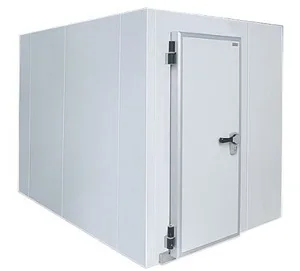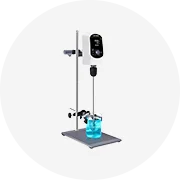Types of LOVOL Engine 1104
The LOVOL 1104 engine is a powerful and reliable 4-cylinder diesel engine designed for heavy-duty applications. Available in two main variants, these engines offer exceptional performance across different power requirements and operating conditions.
LOVOL 1104-4TAA61 Engine
A robust 4-cylinder diesel engine designed for versatility and reliability in various applications.
- Maximum Power: 61 kW
- Maximum Torque: 250 Nm
- Speed Range: 1500-2200 rpm
- Emissions: Euro 3 and Tier 3 standards
The 1104-4TAA61 is the most widely used model in excavators, valued for its large displacement which delivers greater power and high torque. It excels in low-speed performance, making it ideal for construction machinery, agricultural tractors, and other applications requiring reliable power delivery.
LOVOL 1104-4TAA75 Engine
A high-performance 4-cylinder diesel engine built for demanding operations and challenging environments.
- Maximum Power: 75 kW
- Maximum Torque: 340 Nm
- Speed Range: 1600-2200 rpm
- Key Feature: Enhanced cooling capacity
The 1104-4TAA75 offers strong power output and excellent low-speed performance. Its enhanced cooling capacity makes it particularly suitable for high-temperature environments. This model adapts well to various working conditions and climate variations, making it a popular choice for agricultural tractors, construction machinery, and other heavy-duty applications.
LOVOL 1104 Engine Models Comparison
| Feature | LOVOL 1104-4TAA61 | LOVOL 1104-4TAA75 |
|---|---|---|
| Maximum Power | 61 kW | 75 kW |
| Maximum Torque | 250 Nm | 340 Nm |
| Speed Range | 1500-2200 rpm | 1600-2200 rpm |
| Best Applications | Excavators, Medium-duty equipment | Tractors, Heavy-duty construction |
| Special Features | Low-speed performance | Enhanced cooling capacity |
Specifications of LOVOL Engine 1104
The LOVOL 1104 engine series features robust engineering designed for industrial applications. Below are the detailed technical specifications:
| Parameter | Specification |
|---|---|
| Engine Model | LOVOL 1104 |
| Engine Type | In-line 4-cylinder, 4-stroke water-cooled diesel engine |
| Bore × Stroke | 100 × 127 mm |
| Displacement | 4.4 L |
| Rated Power | 75 kW |
| Maximum Torque | 320 Nm |
| Engine Speed | 2200 r/min |
| Compression Ratio | 18:1 |
| Lubrication System | Forced lubrication system |
| Fuel Consumption | 204 g/kWh at rated power |
Engine Performance Note: The LOVOL 1104 engine's 18:1 compression ratio and 4.4L displacement provide an excellent balance of power delivery and fuel efficiency. The large bore and stroke dimensions (100×127mm) contribute to its high torque output, making it particularly effective for heavy-load applications.
Maintenance Requirements for LOVOL Engine 1104
Proper maintenance is crucial for maximizing the lifespan and performance of your LOVOL 1104 engine. Following these maintenance procedures will help ensure reliable operation and prevent costly repairs.
Recommended Maintenance Schedule
| Maintenance Item | Daily Check | Every 100 Hours | Every 250 Hours | Every 500 Hours | Every 1000 Hours |
|---|---|---|---|---|---|
| Engine Oil Level | ✓ | ||||
| Coolant Level | ✓ | ||||
| Oil Change | ✓ | ||||
| Air Filter Inspection | ✓ | ||||
| Fuel Filter Replacement | ✓ | ||||
| Belt Tension Check | ✓ | ||||
| Cooling System Service | ✓ | ||||
| Valve Clearance Check | ✓ |
Key Maintenance Areas
Regularly check oil levels and quality. Use the manufacturer-recommended oil grade and change according to the maintenance schedule. The oil filter should be replaced with each oil change. Proper oil maintenance is critical for lubrication, cooling, and protecting internal engine components from wear and corrosion.
Inspect coolant levels daily and maintain the proper coolant mixture ratio. Check for leaks in hoses, connections, and the radiator. Clean the radiator fins periodically to ensure optimal heat dissipation. An efficiently functioning cooling system prevents overheating and extends engine life.
Inspect the air filter regularly and clean or replace as needed. A clogged air filter restricts airflow, reducing engine performance and increasing fuel consumption. In dusty environments, more frequent inspection and cleaning may be necessary.
Check fuel lines and connections for leaks. Replace fuel filters according to the maintenance schedule. Use clean, high-quality diesel fuel to prevent contamination. Water separators should be drained regularly to prevent water from entering the fuel system.
Inspect battery connections for corrosion and ensure proper charging. Check wiring harnesses for wear or damage. Verify alternator output meets specifications. A well-maintained electrical system ensures reliable starting and proper function of electronic components.
Check for leaks, cracks, or damage in the exhaust manifold, pipes, and muffler. Ensure all mounting brackets are secure. A properly functioning exhaust system maintains back pressure at designed levels and helps the engine operate efficiently.
Important: Always follow the manufacturer's specific maintenance guidelines for your LOVOL 1104 engine model. Operating conditions such as extreme temperatures, dusty environments, or heavy loads may require more frequent maintenance intervals than those listed in the general schedule.
How to Choose the Right LOVOL Engine 1104
Selecting the appropriate LOVOL 1104 engine requires careful consideration of application requirements, operating conditions, and performance needs. This guide will help retailers, wholesalers, and end customers make informed decisions when purchasing these engines.
Key Selection Factors
Application Requirements
Different equipment types have specific engine needs:
- Construction Machinery: Excavators and loaders typically require engines with high torque at low RPM for digging operations
- Agricultural Equipment: Tractors and harvesters benefit from engines with consistent power delivery across various speed ranges
- Commercial Vehicles: Trucks need reliable engines with good fuel economy and durability for long-haul operations
Recommendation: Match engine specifications to the specific work demands of the intended equipment
Power Requirements
LOVOL 1104 engines offer power outputs ranging from 55-85 kW (75-114 hp):
- 1104-4TAA61: 61 kW - Suitable for medium-duty applications
- 1104-4TAA75: 75 kW - Ideal for heavy-duty applications
Higher power outputs are necessary for larger equipment or applications involving heavy loads, steep gradients, or challenging operating conditions.
Key consideration: Always select an engine with at least 10-15% more power than minimum requirements
Operating Environment
Environmental factors significantly impact engine selection:
- High-Temperature Regions: The 1104-4TAA75 with enhanced cooling capacity is recommended
- High-Altitude Operations: Consider power loss factors (approximately 3% per 1000 ft elevation) when selecting engine power
- Dusty Environments: Ensure robust air filtration systems are included
Maintenance & Serviceability
Consider long-term ownership factors:
- Component Accessibility: Engines with easy-to-access service points reduce maintenance time and cost
- Parts Availability: Ensure spare parts are readily available in your region
- Service Intervals: Longer service intervals reduce downtime and operating costs
Pro tip: Factor in total cost of ownership, not just initial purchase price
Expert Advice: When selecting between the LOVOL 1104-4TAA61 and 1104-4TAA75 models, consider future needs alongside current requirements. Opting for the higher-powered model may provide better long-term value if equipment usage or load conditions are expected to increase over time. The additional 14 kW of power in the 4TAA75 model provides valuable operational headroom at a relatively modest cost difference.
Emission Standards Compliance
LOVOL 1104 engines are designed to meet various emission standards, including:
- Euro III / Tier 3: Standard compliance for most models
- Regional Requirements: Verify that your selected engine meets local emission regulations
Non-compliance with local emission standards can result in legal penalties and operational restrictions. Always confirm the specific emission certification of your engine model before purchase.
DIY LOVOL Engine 1104 Replacement Guide
Replacing a LOVOL 1104 engine requires technical expertise, proper tools, and careful attention to detail. While professional installation is recommended, experienced mechanics may perform this task as a DIY project by following these comprehensive steps.
Safety Warning: Engine replacement involves heavy components and potentially hazardous materials. Always wear appropriate safety gear, work with a helper, and follow all safety protocols. If you're uncertain about any step, consult a professional mechanic.
Required Tools and Materials
| Essential Tools | Consumables | Safety Equipment |
|---|---|---|
|
|
|
Step-by-Step Replacement Procedure
- Preparation and Documentation
- Take photos of the engine setup from multiple angles before beginning
- Label all hoses, wires, and connections
- Disconnect the battery negative terminal
- Drain all fluids (coolant, oil, fuel) into appropriate containers
- Disconnection
- Remove all electrical connections (sensors, alternator, starter)
- Disconnect fuel lines, marking their positions
- Remove air intake system components
- Disconnect and label all cooling system hoses
- Remove exhaust connections at the manifold
- Disconnect transmission or PTO connections
- Engine Removal
- Remove any components blocking access to engine mount bolts
- Attach the engine hoist securely to proper lifting points
- Remove engine mount bolts while supporting engine weight
- Carefully lift the engine, ensuring all connections are free
- Place the old engine on an engine stand for parts transfer
- Component Transfer
- Transfer accessories not included with the new engine (alternator, starter, etc.)
- Install new gaskets and seals during component transfer
- Inspect all transferred parts for wear and replace as necessary
- Clean all mounting surfaces thoroughly before reinstallation
- New Engine Installation
- Carefully position the new engine using the hoist
- Align engine mounts precisely
- Install and torque mount bolts to specified values
- Connect transmission/PTO according to alignment marks
- Reconnection
- Reconnect exhaust manifold with new gaskets
- Attach all cooling system hoses and clamps
- Connect fuel lines using new seals if necessary
- Reinstall air intake components with new gaskets
- Reconnect all electrical connections according to labels
- System Refill and Testing
- Add the correct type and amount of engine oil
- Fill the cooling system with the proper coolant mixture
- Prime the fuel system according to manufacturer instructions
- Reconnect the battery
- Start the engine and check for leaks and proper operation
- Monitor all gauges and warning indicators
- Final Adjustments
- Check and adjust idle speed if necessary
- Verify proper operation of all engine systems
- Conduct a road/field test if applicable
- Recheck all fluid levels after initial operation
- Inspect for leaks or unusual noises
Professional Insight: When installing a new LOVOL 1104 engine, pay special attention to torque specifications. Over-tightening can damage components, while under-tightening can lead to leaks or mechanical failures. Always use a calibrated torque wrench and follow the manufacturer's torque sequence and specifications.



















































































































































 浙公网安备 33010002000092号
浙公网安备 33010002000092号 浙B2-20120091-4
浙B2-20120091-4